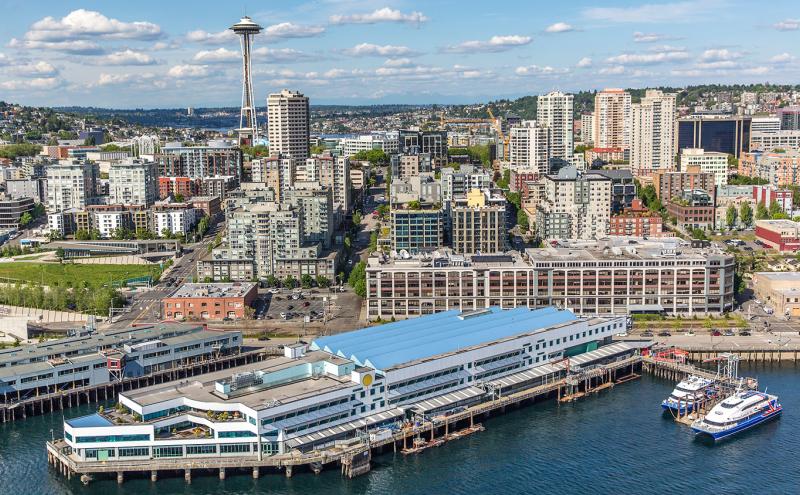
If necessity is the mother of invention, then COVID-19 is the grandmother of a brand new world that has forced organizations to rethink the way they communicate and collaborate. The Port of Seattle has had to stay agile and change the way we work within our organization, with partners, and to serve the traveling public and other communities we support.
It’s no small task for an organization with more than 1,900 employees. Since early March, all employees who can perform their job responsibilities at home have been teleworking. But there’s also the responsibility to continue outreach and operate facilities that are essential to keeping our region running.
Internal innovation
Virtual meeting tools like Microsoft Teams allow departments across the Port to connect and continue important work without missing a beat. In fact, teleworking has even increased the frequency of communication and helped teams get closer.
“Through virtual meetings, I feel like my team sees each other much more often. With our team divided between the airport and Pier 69 and people busy coming and going, we don’t normally see each other as a full team, except in team meetings, once or twice a month,” said Larry Ehl, Executive Chief of Staff and Director of Strategic Initiatives.
While teleworking, the frequency of meetings with the team has increased to two weekly full team meetings: one focused on work, and one for team building.
“It feels like we are learning more about each other; part of it is being on a video call and someone’s dog or cat walks by. It’s a function of meeting in a different environment.”
Virtual meetings have also allowed for increased efficiency. Ehl said during Executive Leadership Team meetings, people have become more efficient with information sharing, so meetings are shorter and team members have more time to focus on projects and other work.
“If we were conducting in person meetings I’m not sure we would have gotten to that level of efficiency and effectiveness,” Ehl said. “I’m excited to see how this impacts our meetings when we are able to meet in person again.”
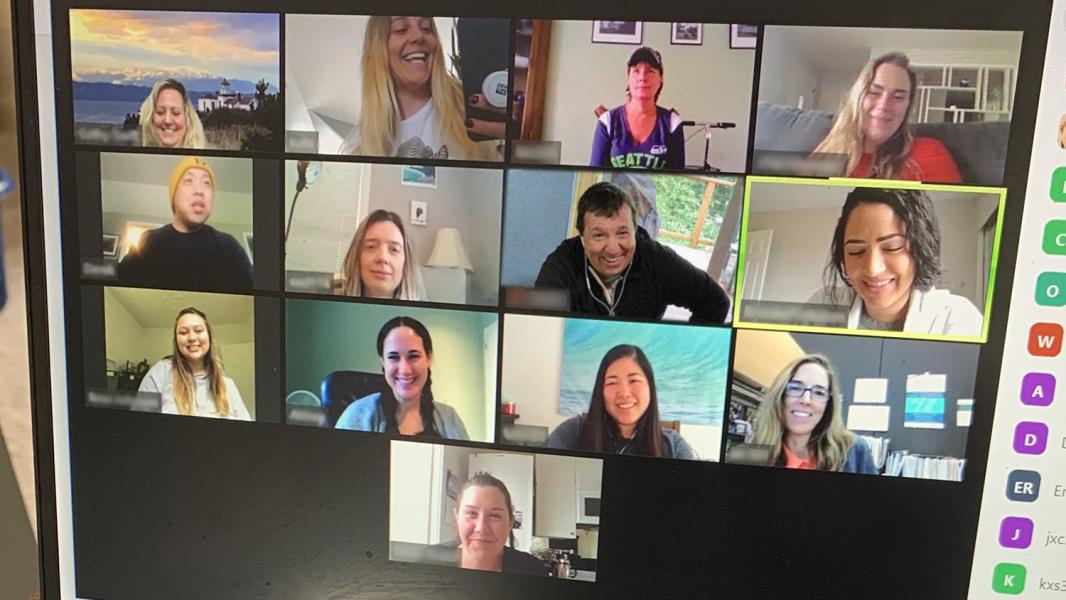
Ehl said the Port’s culture of collaboration and inclusiveness has likely contributed to working successfully in a new environment.
“We are really committed to carrying out the Port’s mission of completing environmental work, helping community partners and small businesses, and having a presence in their communities,” he said. “I suspect that makes a difference in people getting up to speed in the new environment; people feel a sense of accountability and responsibility for doing good for the region.”
Another essential function is communication between executives and employees in an organization. To foster connection Executive Director Steve Metruck leads regular Town Halls out of his home using Microsoft Teams Live. These meetings are an effective way facilitate conversation across a large organization with employees working out of many different locations.
“Steve talks about respect and accountability and transparency,” Ehl said. “These meetings are keeping with his philosophy in how he operates. It reinforces his values to the organization, and I suspect we will continue this communication to some degree after we return to the office.”
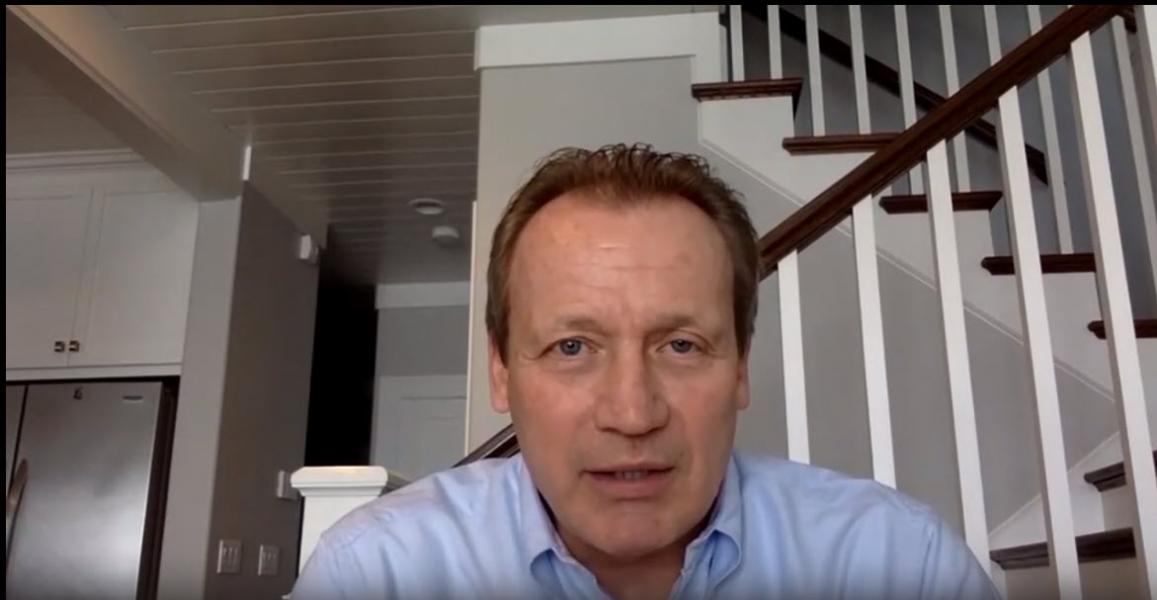
Seamless business support
Because of the economic impacts of COVID on the local community, it’s more essential now for the Port to continue assistance to all businesses, particularly women and minority-owned businesses.
PortGen workshops, which help provide connections, resources, and networking for small, disadvantaged, minority, and women-owned businesses interested in contracting with the Port, have shifted from an in-person to a live webinar format. These webinars will be recorded and available online for anyone who can’t attend the live session. Online contracting resources are always available.
Tina Boyd, Small and Disadvantaged Business Coordinator, says that these virtual sessions have been well-received by attendees and will continue after physical distancing restrictions are lifted.
“It’s time-consuming for business owners to make time for an in-person workshop. A normal PortGen workshop is two hours without travel time. If business owners are able to participate in a webinar for an hour in their office and they turn on their webcam so we can see their face, and they ask questions, they are still getting that exposure,” she said.
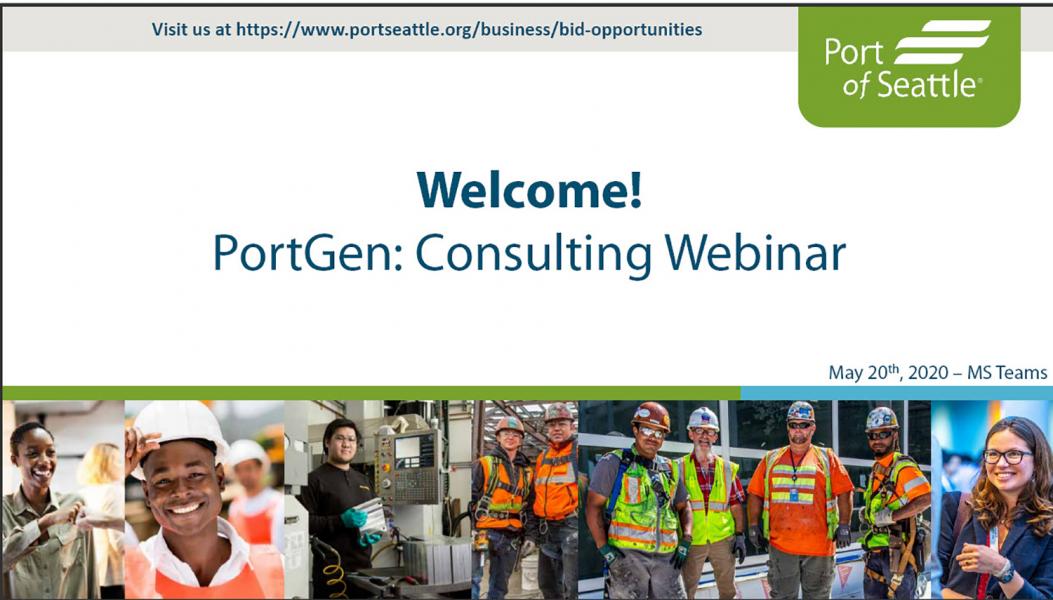
Virtual community building
Sally del Fierro, Director of Community Engagement, said video conferencing has allowed the Port to continue to speak face to face with their audience for community meetings and outreach events. The new format offers a lot of benefits to both the Port and those who attend the meetings. The Port also prioritizes accessibility by including a call-in option to ensure that people without access to internet or technology can join by phone.
“There’s no traffic or finding a place to park. There are choices in how people show up in the meeting, whether they want to call in or use their computer and turn on their camera,” Del Fierro said.
The Port’s popular Port 101 adult education series will move to a virtual format this fall for its 12th anniversary.
“In the past, it’s been a huge success and we’ve always had audiences at full capacity,” she said. “In some ways it won’t be the same — you can’t replace a boat ride up the Duwamish on a beautiful September afternoon. But in some ways it will be better — like providing behind the scenes virtual tours that wouldn’t have been possible in person.”
For example, innovation could provide new perspectives like insider tours of the airport’s baggage handling system, International Arrivals Facility and the aerial passenger walkway during construction, or a container vessel and working shipyard.
Del Fierro said virtual meetings have been popular with community members.
“It’s easy for people for people to participate, and people have a little more availability these days. People are looking for relationship, relevance, and information,” she said.
Del Fierro said that virtual conferencing for community meetings will continue after physical distancing restrictions are relaxed.
“This is here to stay,” she said. “Even before the virus, we were having issues getting places because traffic is so bad. Once this is really over, the West Seattle Bridge closure will present accessibility issues for some. From an internal standpoint and definitely an external standpoint, using virtual tools makes meetings and communications more accessible. Our comfort with these tools will only increase over time.”
Commission meetings
One major public shift in Port communication is holding virtual Port of Seattle Commission meetings twice a month. A temporary change in the Open Public Meetings Act allows municipalities to hold public meetings in a virtual format if the public is able to participate in the meeting and provide public comment. Amy Dressler, Port Records Manager and Interim Commission Clerk, and Lauren Smith, Port Deputy Commission Clerk, managed this transition and have been working with the Port’s legal team to ensure compliance each step of the way.
The March 10, 2020 Commission meeting was held in person but added the possibility of virtual comment through a conference line along with the submission of written comments, which is always allowed. Similar plans were made for the March 24 meeting, but after Washington state Gov. Jay Inslee instated the Stay Healthy Stay Home order the night of March 23, Commission staff had to pivot quickly and go completely virtual.
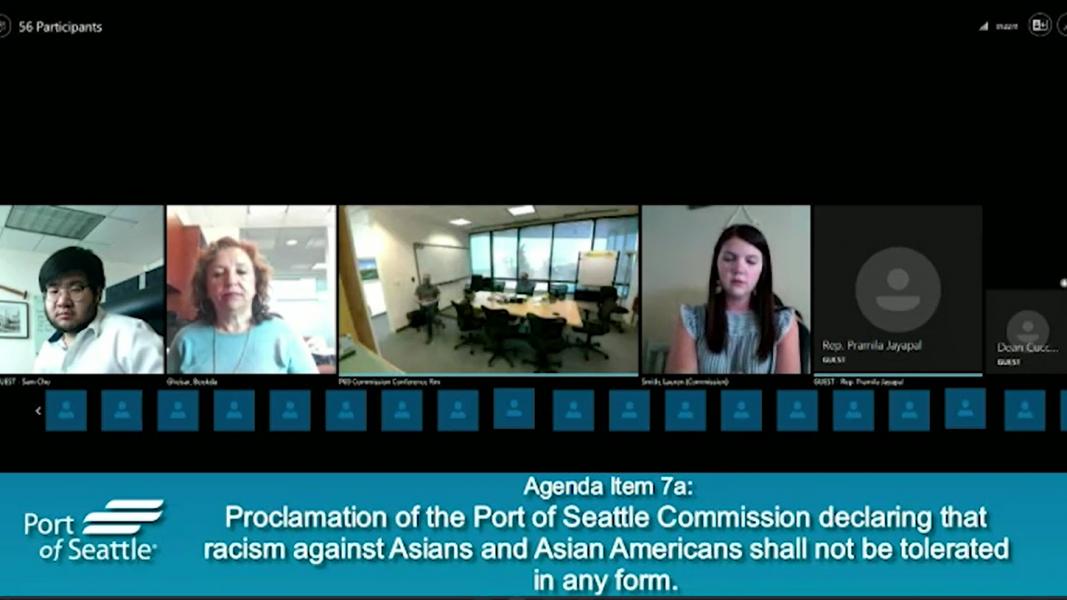
Dressler said they had a plan in place for multiple scenarios. Seattle Community College TV (SCCTV), who records Commission meetings, could set up a Skype meeting with all participants joining remotely To ensure access for all, members of the public also have the option to call in and listen to the meeting, versus livestreaming from a computer.
Although staff were prepared to host virtual meetings, they have learned a few tips for conducting effective online meetings along the way:
- Use mute and unmute buttons to limit background noise and enable the current speaker to be heard
- Don’t interject while other participants are speaking because it makes it hard to hear the presenter
- Rather than an audible “yay” or “nay” vote all at once, hold an individual roll call vote to make sure that every participant’s voting record is clear
After the Stay at Home order is lifted, virtual public meetings will no longer be allowed. But for now, Dressler said she appreciates the organized discussion that occurs in a virtual format.
Dressler said that transparency for public meetings has always been highest priority for the Port. Even before virtual meetings began, the Port has always tried to make sure it is on a level playing field in terms of transparency. Commission documents are always been available to the public online through its meeting portal.
“Any member of the public who wants to have information about meetings, observe meetings, or give public testimony has always been able to easily access that information,” she said. “With that in mind we've always had a good digital platform for providing that information.”
Stay Connected







